Mazor Mausoleum: True or false tomb of John the Baptist? - Identifying biblical sites, Part 2
Unique monument stood for over 1,700 years without major changes or renovations

Among many unknown Israeli historical and archaeological sites, one located not far from the Ben Gurion International Airport may never be noticed by the majority of tourists visiting the Holy Land.
The unique site called the “Tomb of John the Baptist” is a complete and untouched Roman burial building, also called the "Mazor Mausoleum," and is dated to the mid-3rd century A.D.
Although the official dating of the site is from a later period, could this place be the actual tomb of the biblical figure John the Baptist, who lived during the 1st century A.D.?
This so-called “Tomb of John the Baptist” is located on the western outskirts of Elad, near Petah Tikva and Ben Gurion Airport, at an elevation of around 75 meters (almost 250 feet) above sea level, near the Mazor Stream.
Covering about 25 dunams (over 10,750 square feet), the land around the building was designated a national park on March 21, 2002, and is currently managed by Israel's National Parks Authority.
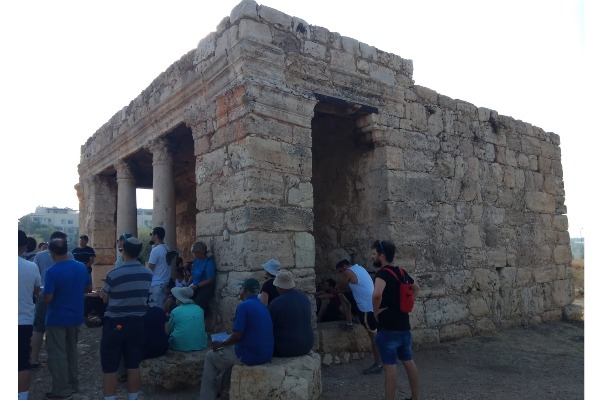
This mausoleum is unique in Israel for surviving intact from the Roman era. Most likely initially built for a prominent Roman individual and his spouse, whose identities remain unknown, the current structure still contains remnants of two sarcophagi, albeit without their upper parts. It features a square room with a 4.8-meter-high (15.75-foot-high) ceiling made of hewn stone slabs, supported by two beautiful stone arches.
The thick walls of the ancient building and its small windows help maintain a constant internal temperature. The mausoleum's northern façade has a wide gate divided into three entrances by two monumental pillars topped with Corinthian capitals and a stylized cornice. An additional room on the southern side contains a columbarium with 60 pigeon niches. The building is surrounded on the outside by several graves and water cisterns.
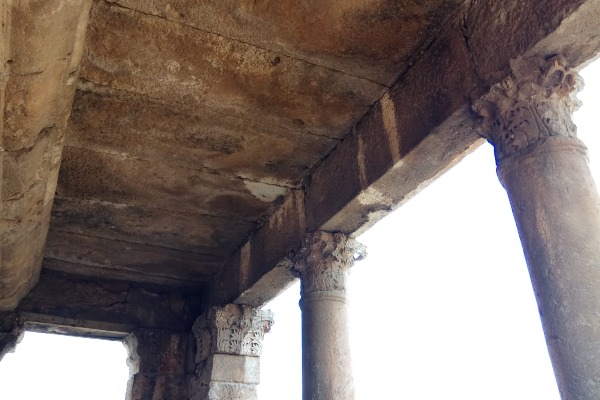
This monument has stood for more than 1,700 years without major changes or renovations, by archaeologists or anyone else. In contrast, many other archaeological sites in the Middle East are being rebuilt to enhance accessibility and highlight their historical significance.
Local authorities in the nations neighboring Israel sometimes employ "anastylosis," an architectural conservation technique that involves reconstructing a collapsed building or monument using as many of the original architectural elements as possible. In Israel, this technique is used less frequently due to a preference for scientific accuracy.
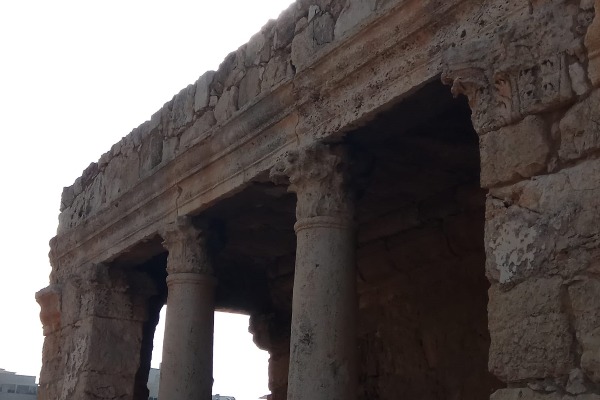
Could this tomb be a later Roman renovation of an earlier 1st-century A.D. burial place? This hypothesis has never been suggested because there is no context or archaeological remains to support such a claim. No archaeological remains dated to the 1st century A.D. have been uncovered on the spot, and no previous archaeological layers were noted below the late Roman building. Everything points to the fact that the site was first built in the 3rd century A.D.
However, it is known that since the Middle Ages, this site has been referred to by Muslims as "Makam an-Nabi Yahya," the Shrine of the Prophet John. This name appears to link the site to the biblical figure John the Baptist. Muslims believe the biblical John the Baptist to have been a prophet, and he is mentioned in the early Islamic texts.
While the Islamic identification appears to be quite ancient, according to most modern scholars, it is likely, in fact, a later belief. Many scholars think that the building was converted into a Muslim pilgrimage and prayer site some time during the Middle Ages.
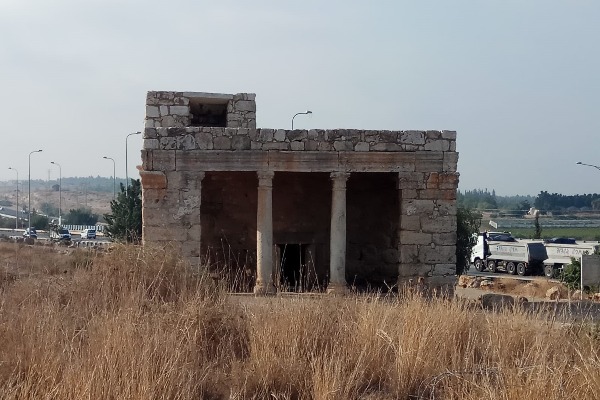
The New Testament and the writings of Flavius Josephus provide information about the death of John the Baptist, but do not indicate he was buried near the Mazor Stream. Instead, it is suggested by some researchers that John the Baptist may have been buried in the Dead Sea area, specifically near the fortress of Machaerus, where he was killed.
Matthew 14:12 mentions that "his disciples came and took away his body and buried it." However, it is also possible his body was moved to another location for burial, potentially to his hometown.
According to another tradition, his hometown is the modern Jerusalem neighborhood of Ein Karem, which doesn't fit with the Mazor Mausoleum location, being situated far away from it.
The historical reason for the Islamic reuse of the site or its specific identification is not entirely clear. However, it is known that during the Mamluk Period in Israel, from the 13th to the 16th centuries A.D., many local folkloric and religious legends and traditions emerged in the Holy Land.
Some scholars suggest the Mamluks encouraged this trend to “Islamize” the land of Israel, becoming known as "Filastin" in the Middle Ages, and to increase its Islamic significance and pilgrimage. This may have also been intended to prevent the return of the Crusaders.
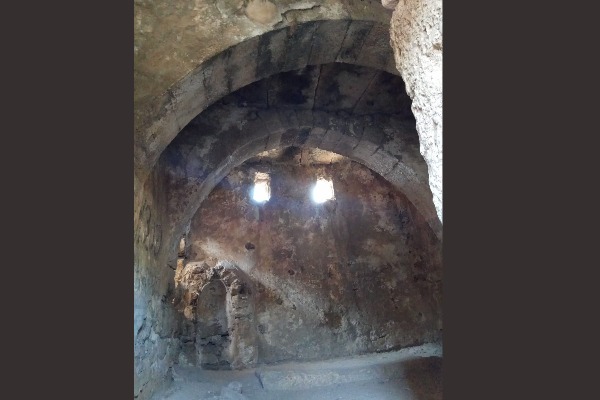
Since the Mausoleum is located in the Sharon area, a coastal region of Israel, the transformation of the Roman tomb into a Muslim pilgrimage site may have been one of the Mamluks' strategies during the 13th and 14th centuries A.D. This transformation, along with the destruction of most coastal fortresses and ports in the Holy Land, such as Caesarea and Atlit, was likely intended to prevent the Crusaders from returning and reestablishing a foothold via the Mediterranean Sea.
Ancient identifications of historical and biblical sites, including graves of biblical figures, were generally more accurate when documented during the earlier Roman and Byzantine periods. For example, Eusebius of Caesarea, a prominent figure of the 4th century A.D., was known for his precise documentation of biblical Israel.
Many researchers acknowledge that identifications of biblical sites and biblical geography established later during the Middle Ages by some Christians, Muslims, and even some Jews, can be totally inaccurate.
During the Middle Ages, a mihrab, a Muslim prayer niche indicating the direction of Mecca, was installed in the Mausoleum's southern wall, and a passage was created to connect the two rooms. Due to its religious significance, the structure was well-preserved over time and functioned as a mosque until Arab villagers left the nearby village of Al-Muzayri'a in 1948, during Israel's War of Independence.
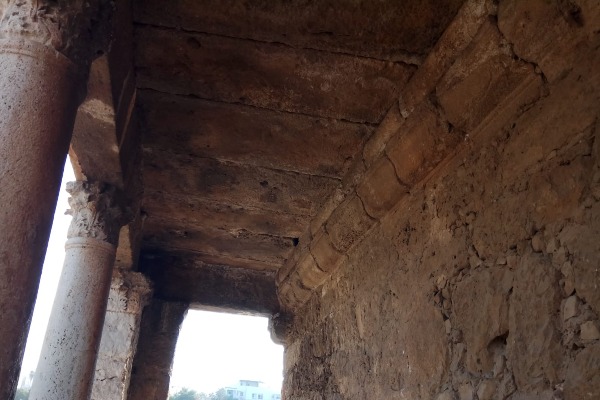
In July 1949, Israeli authorities attempted to demolish the mausoleum after it had been used for target practice by Israeli soldiers. However, an antiquities inspector intervened to prevent its destruction.
The exact burial place of John the Baptist continues to be a mystery.
Islamic tradition identifies another specific site for the burial of the head of John the Baptist in the Umayyad Mosque in Damascus, Syria. This mosque was a Christian cathedral dedicated to John the Baptist, and today still holds relics attributed to him.
Another optional location for the Islamic traditional burial place of John the Baptist is the 'Nabi Yahya Mosque' at Sebastia near Nablus in Samaria (West Bank), which complicates our research for the historical grave even more.
It seems a church was built already on this spot during the Byzantine period, and that it was, perhaps, already dedicated to the biblical figure. The location of the tomb at Sebastia may not correlate with the Christian or historical interpretation of John the Baptist's life today, but may have during the Byzantine period.
While we will probably never know exactly where John the Baptist was buried, the Mausoleum of Mazor remains an ancient Islamic pilgrimage site named after him.
This tradition does not seem to align with historical accuracy and the site appears to be only a well-preserved Roman tomb belonging to an aristocratic family.
Although it apparently cannot directly be linked to any biblical events or figures, its significance as a historical Israeli site should not be overlooked. Today, the mausoleum stands as a testament to the region's rich historical and cultural heritage.

Aaron Goel-Angot is a Belgian-Israeli archaeologist with an expertise in antiquities identification. He is an enthusiastic numismatist and a licensed tour guide. He holds a BA degree in archaeology from the Institute of Archaeology at the Hebrew University of Jerusalem. He joined the ALL ISRAEL NEWS team as an Archaeology and Tourism correspondent. Aaron is married, father of three young children and lives in Jerusalem.
You might also like to read this:














